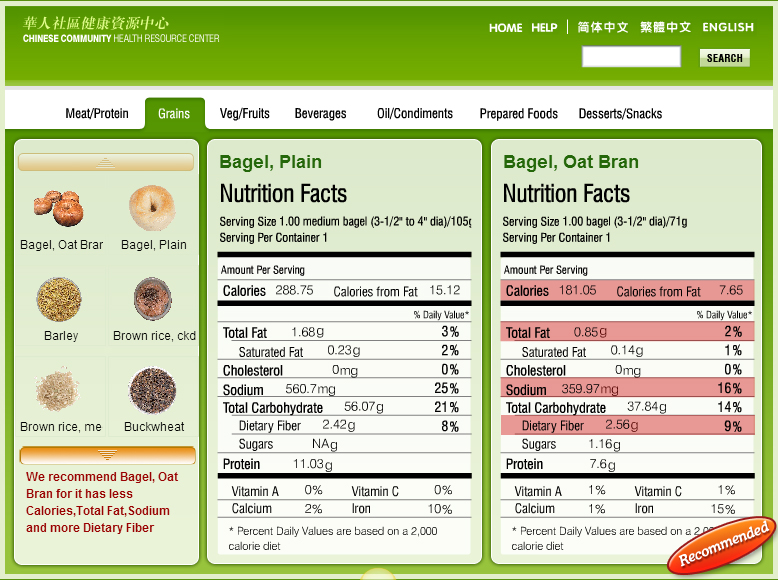The goal of the Grocery Shopping program is to demonstrate practical uses of nutrition facts label reading. On November 8, 1990, President Clinton signed into law The Nutrition Labeling and Education Act. It requires food manufacturers to disclose the fat (saturated and unsaturated), cholesterol, sodium, sugar, fiber, protein, and carbohydrate content in their products. This applies mainly to packaged foods. Moreover, the Act requires the Food and Drug Administration to establish standards and definitions for food descriptors such as “low,” “lean,” “lite,” “reduced,” etc and to set standards for allowing health claims on foods. The nutrition facts labels are intended to guide consumers in making good food choices.
This program will show you how to compare nutrient contents of like foods and hopefully make your grocery shopping experience less frustrating and more healthful.
Instructions:
Select a food by browsing the categories or inputting keyword(s) in the search bar on the upper right corner. When you click on the food item, three possible scenarios will appear:
- The item you selected is a good choice for which you will see only one Nutrition Facts label and the word “Recommended” at the bottom. In most cases, this item is the recommended choice compared to like food.
- Your selection is not being compared to another food, for which you will see only one Nutrition Facts label and sometimes a comment about this item.
- The selected item could be substituted by a healthier like food. In this case, you will see two Nutrition Facts labels. The first label is for your selection, and the second label is for the Recommended choice.
For your information, the nutrients highlighted indicate the rationale for our recommendation. A brief comment can be found on the bottom of the left column.



